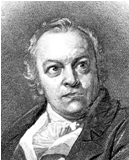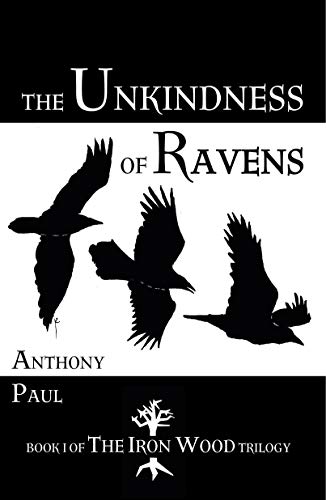Songs of Innocence and Experience by William Blake
Page 17 of 18 - 1 2 3 4 5 6 7 8 9 10 11 12 13 14 15 16 17 18 Purchase full notes for £5.95 (aprox $9.28)
The Tyger
The barren tree of experience is again a feature of this plate, but it is inevitably the illustration of the tiger itself that draws the eye. As is frequently pointed out, there is an obvious contrast between the terrifying beast described in the poem and this gentle image, and some have simply questioned Blake’s ability as an artist to capture the beast’s demonic energies. Blake, however, was more-than-capable of depicting terror when he wished to, and all of his portrayals of tigers and lions in the Songs are similarly peaceful and have an aura of spiritual calm about them (cf. the second plate of The Little Girl Lost ). The whole point of the poem is not to impress on the reader the feral energies of this beast, but to challenge and confuse our notions of creation and the creator. The use of a depiction of the tiger from the perspective of innocence is most effective, as it contrasts with the experienced perspective of the text, and serves to tease the reader still further. According to the poem, the tiger appears terrifying with its ‘fearful symmetry,’ but that is because this is a song of experience . From the innocent perspective, tigers and lions are majestic, beautiful and even protective creatures (cf. again The Little Girl Lost ). Which perspective is true? The only answer Blake permits us is ‘Without contraries there is no progression.’
The poem’s images and insistent rhythms are so familiar that it is easy to miss the point that it is actually the anxious poet who provides most of the energy of this poem. The poem, in fact, is an invocation of energy, and it uses the trochaic rhythms, repetitions and alliterative techniques of a chant: the witches’ chant in Macbeth (‘Double, double, toil and trouble’) is rhythmically almost identical. This energy creates a tiger of the mind, and a Creator of the imagination. As to who He is, the poem deliberately withholds an answer, but Blake’s imagery of extraordinary strength and imagination – ‘And what shoulder, & what art,’ – of hammers, chains, furnaces and anvils, suggest some kind of divine blacksmith, such as Vulcan or Hephaistos – or, if it were not the ‘skies’ of Olympus that saw the tiger’s creation, then perhaps it was the ‘deeps’ of Hell, and some great devil who forged this beast of fire. The tiger, however, is not some kind of evil creature of the underworld: its ‘fearful symmetry’ implies the precision of beauty, and the creation of a thing of wonder by a sublime Being – ‘On what wings dare he aspire?’

